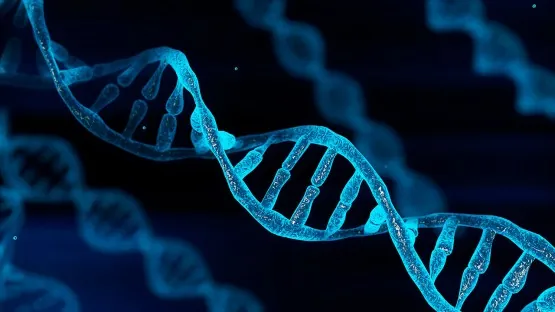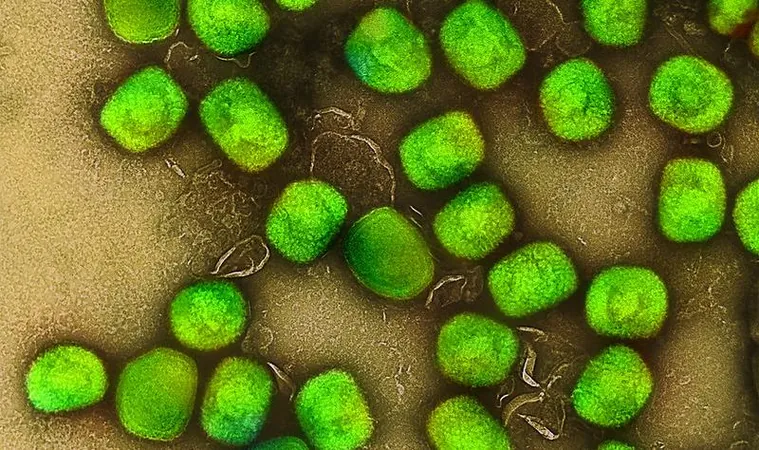
Groundbreaking Study Reveals New Insights into Bladder Cancer Development and Treatment Resistance
2024-10-11
Author: John Tan
Introduction
A transformative study conducted by researchers from Weill Cornell Medicine and the New York Genome Center has unveiled crucial mechanisms underlying the origins and progression of bladder cancer, a disease that currently affects approximately 80,000 individuals annually in the United States. This research, published in the prestigious journal Nature on October 9, focuses on urothelial carcinoma, the predominant form of bladder cancer that arises from cells lining the bladder and urinary tract.
Key Findings
The researchers discovered that antiviral enzymes, specifically the APOBEC3 family, play a pivotal role in the early development of bladder cancer. These enzymes, which typically function to edit viral DNA, inadvertently lead to mutations in the DNA of both normal and cancer cells. Furthermore, they found that standard chemotherapy, particularly platinum-based treatments like cisplatin, inadvertently prompts significant mutations, fostering the survival of cancer cells and complicating treatment outcomes.
Expert Insights
Co-senior author Dr. Bishoy Faltas, an esteemed oncologist and researcher at Weill Cornell, explained, "Our findings define new fundamental mechanisms driving bladder cancer evolution—mechanisms that we can now think about targeting with therapies." This statement underscores the potential for developing novel treatment strategies aimed at these newly identified pathways.
Research Methodology
The study meticulously examined malignant and pre-malignant urothelial cells from patients at various disease stages, employing whole-genome sequencing alongside advanced computational techniques. The goal was to map common DNA mutations and structural variations that contribute to the tumor's resistance to treatment. One startling revelation was the presence of complex rearrangements in the DNA of urothelial tumors, leading to the formation of circular DNA segments, referred to as extra-chromosomal DNAs (ecDNAs). These structures can contain numerous copies of genes that promote cancer cell growth and resistance.
Specific Gene Insights
The team’s exploration of the CCND1 gene, a known key regulator of the cell cycle, revealed that in its extrachromosomal configuration, it significantly contributes to treatment resistance, indicating a direct link between these genetic alterations and the efficacy of existing therapies.
Future Research Directions
Future collaborations are planned, contemplating even deeper investigations into the biology of urothelial cancer through the analysis of individual tumor cells. By integrating genomic data with transcriptional activity at a single-cell level, researchers aspire to unveil intricate details of tumor evolution and response to therapy.
Clinical Implications
Moreover, the researchers are hopeful about the clinical implications of their findings. They are currently investigating the potential effectiveness of an FDA-approved drug that targets the ERBB2 gene, which is also implicated in breast cancer. This treatment may hold promise for urothelial cancer patients exhibiting signs of ERBB2 ecDNAs.
Conclusion
This groundbreaking research not only illuminates the underlying genetic factors that drive bladder cancer but also opens the door for innovative therapeutic strategies that could significantly improve patient outcomes. As the scientific community continues to unravel the complexities of cancer biology, this study serves as a critical step toward more personalized and effective treatment options for one of the most challenging types of cancer. Stay tuned as we follow up with these promising developments that may change the landscape of bladder cancer treatment forever!

 Brasil (PT)
Brasil (PT)
 Canada (EN)
Canada (EN)
 Chile (ES)
Chile (ES)
 España (ES)
España (ES)
 France (FR)
France (FR)
 Hong Kong (EN)
Hong Kong (EN)
 Italia (IT)
Italia (IT)
 日本 (JA)
日本 (JA)
 Magyarország (HU)
Magyarország (HU)
 Norge (NO)
Norge (NO)
 Polska (PL)
Polska (PL)
 Schweiz (DE)
Schweiz (DE)
 Singapore (EN)
Singapore (EN)
 Sverige (SV)
Sverige (SV)
 Suomi (FI)
Suomi (FI)
 Türkiye (TR)
Türkiye (TR)